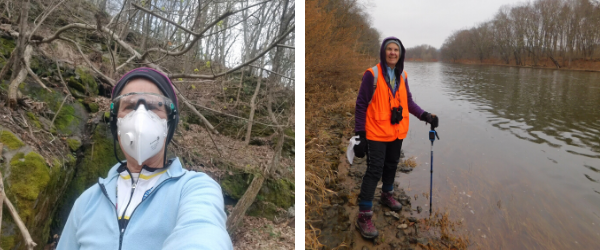Three Vultures get a second chance
by: Larissa Smith, CWF Biologist

Three juvenile Black Vultures were released back into the wild at at site in Cumberland County.
This location is the site where several other juvenile eagles were released recently after recovering from various injuries. A feeding station has been set up and stocked every other day with fresh fish to supplement their diet until they are able to hunt on their own. Game cameras set up by ENSP, Kathy Clark show that both eagles and vultures have been visiting the site. One of the first juvenile eagles to be released and banded E/96, makes almost daily visits to the site.
Diane Nickerson Director of the Mercer County Wildlife Center was caring for three Black Vulture juveniles 3.5 to 4 months old, that were ready for release. It was decided to release them at the feeding station in Cumberland County where they could be around other vultures.

Black vultures do not build nests, they lay their eggs in tree cavities, hollow logs, caves and on the floor of abandoned buildings. Two of the vulture nestlings had been removed from a barn during renovation and dumped in the woods. Luckily a neighbor found them and they arrived at Mercer County Wildlife Center on May 28, 2020. The third nestling came from the Raptor Trust in June.
Vultures are social, they roost, eat and soar in groups. The three juveniles needed to be released where there were other vultures. The nest cams at the feeding site showed that there were plenty of both Turkey and Black vultures, at the feeding site.

Thank you to Mercer County Wildlife Center and everyone who made this release possible, including the Eagle Project volunteers who have been dropping fish off at the feeding station.









